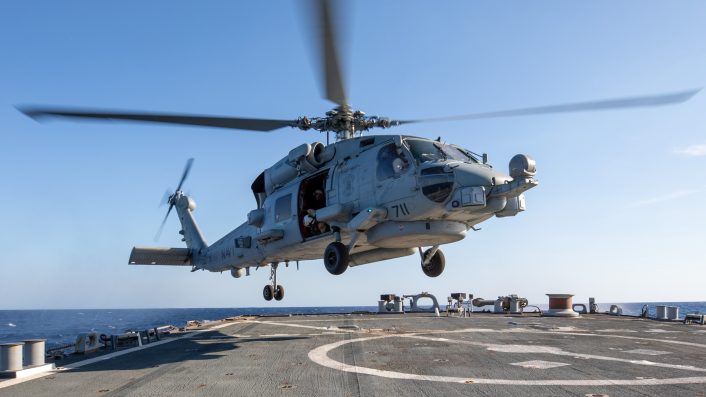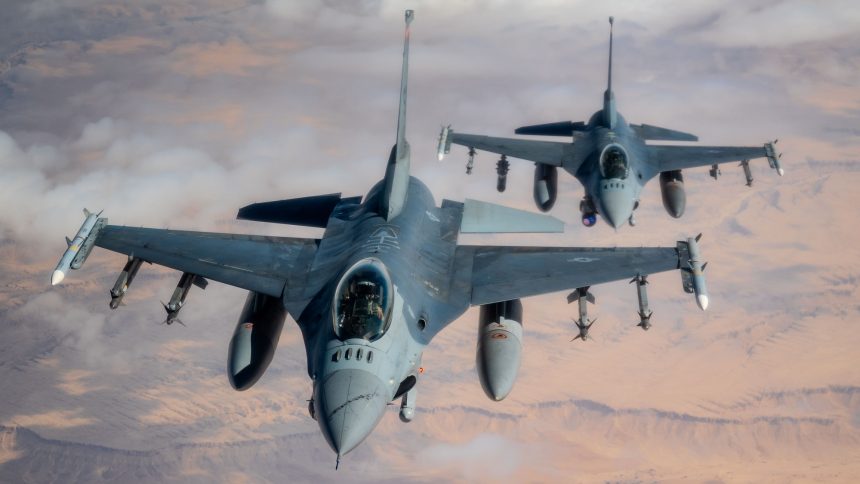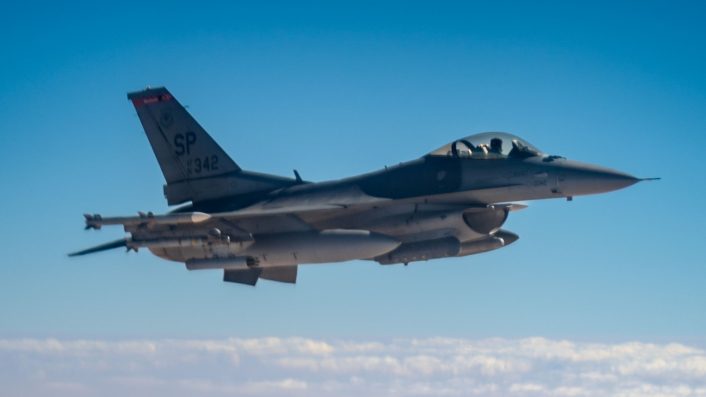The U.S. Air Force confirmed that F-16 fightes used Advanced Precision Kill Weapon System 70mm guided rockets in the air-to-air role in combat to shoot down Houthi drones.
The U.S. Air Force has officially employed for the first time laser-guided 70mm rockets in the air-to-air role during operations in the Red Sea over the course of 2024. The Advanced Precision Kill Weapon System II (APKWS II) guided-rockets were deployed from F-16 Viper multirole fighter jets to engage hostile drones launched by the Houthis, the Iranian-backed Yemeni militia.
The U.S. Air Force has first announced back in 2019 that the APKWS II, originally developed as a low-cost air-to-ground precision munition, had been tested successfully in the air-to-air role, but until now no operational use of the weapon in this role has been disclosed. The details of the combat debut of the APKWS II in this new role are still scarce, with no knowledge of how many guided rockets were employed, how many Houthi drones have been shot down with the weapon, and the exact timeline of the engagements.
A U.S. official told to The War Zone few days ago that the APWKS II air-to-air capability was first employed last year “as one of many options for countering the Houthi UAS threat.” The official added that “It is a lower-cost option compared to the AIM-9X. That lower cost is one of the benefits of using it.”
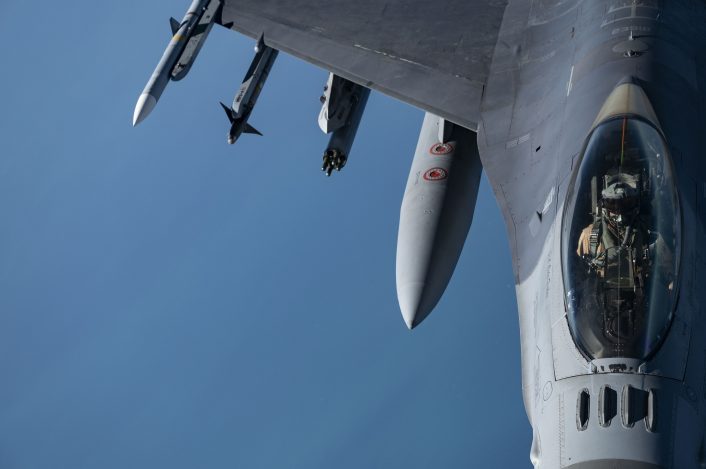
The APKWS II
The AGR-20 Advanced Precision Kill Weapon System II (APKWS II) is a conversion of the Hydra 70 unguided rockets which adds a laser guidance kit to the baseline weapon, turning it into a precision-guided munition (PGM). The Hydra 70 is itself derived from a previous weapon, the 2.75-inch (70 mm) Mk 4/Mk 40 Folding-Fin Aerial Rocket (FFAR) of the late 1940s, a system widely employed in the Korean and Vietnam wars.
By adding a guidance section to a cheap rocket (inserted in the middle of the rocket, between the 10-pound high-explosive warhead at the front and the Mk66 Mod 4 rocket motor at the rear), the U.S. Air Force has therefore been able to obtain low-cost smart munitions that can be used in the air-to-ground role. These are particularly useful when the full warhead of larger bombs (like JDAM) and missiles (like the AGM-65 Maverick or AGM-114 Hellfire anti-tank missiles) is not needed to obtain the desired effects or not suitable due to the danger of collateral damages.
The guidance section of the APKWS includes four foldable wings with wing-mounted laser seeker collection optics with a wide field of view which enable to engage both moving and stationary targets. BAE Systems, which produces the weapon, says that “no modifications are required to the rocket, firing platform or fire control system,” with the only known modification being a longer variant of the LAU-131/A 7-round rocket launcher normally employed by the U.S. Air Force, called the LAU-131 A/A (the Navy uses the AGR-20 with the similar LAU-68 F/A).
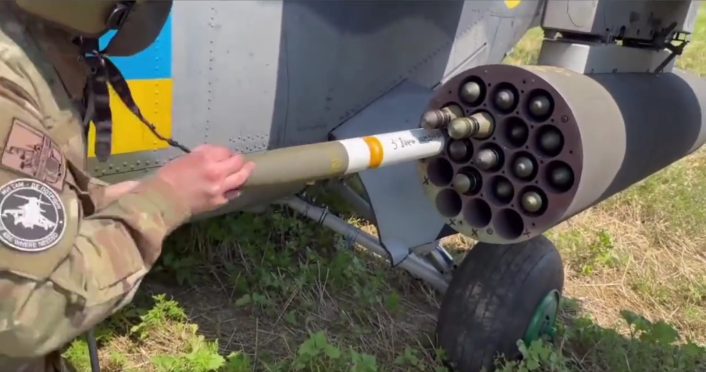
The APKWS is also being used in a novel surface-to-air mode as a Counter-Unmanned Aircraft Systems (C-UAS) to engage low-flying, slow and cheap drones. Specifically, the weapon has been included in the Electronic Advanced Ground Launcher System (EAGLS) employed by the U.S. military in the Middle East and the U.S.-supplied VAMPIRE (Vehicle-Agnostic Modular Palletized ISR Rocket Equipment) used by Ukraine to counter Russian drones.
The U.S. Navy also announced in late 2023 that it was about to deliver a new proximity-fused warhead for APKWS II rockets, optimized for use against drones, albeit developed ostensibly for the surface-to-air role. However, further developing an air-to-air capability out of these older rockets is another impressive feat for the U.S. Air Force, that has now the possibility to engage targets at a very small fraction of the cost of other existing missiles.
While a current beyond visual range radar-guided AIM-120 Advanced Medium Range Air-to-Air Missile (AMRAAM) is priced at more than $1 million each and an AIM-9X Sidewinder Block II has a price tag of around $420,000, the guidance section of an APKWS II only costs around $15,000, with the full APKWS II round only costing a few thousand dollars more (to include the warhead and the motor).
Moreover, the APKWS II can provide American jets with deeper magazines for air-to-air munitions, as they can be carried in a 7-shot rocket pod on a single hardpoint that could otherwise take only a single AIM-9X or AIM-120 missile. The F-16 is also able to carry two LAU-131/As with the standard 70 mm unguided rockets on each pylon by using a triple ejector rack, although it is unclear if this capability is also available for the LAU-131A/A with the AGR-20.
This feature could come in hand while facing swarm or saturation attacks from enemy drones, a tactic that has already been used by Russia in their aggression of Ukraine, by Iran in their attacks on Israel and sometimes on a smaller scale even by the Houthis. The high cost of the interceptors against these cheap targets and the magazine size of the launching platforms have been two of the main concerns highlighted by forces countering these attacks.
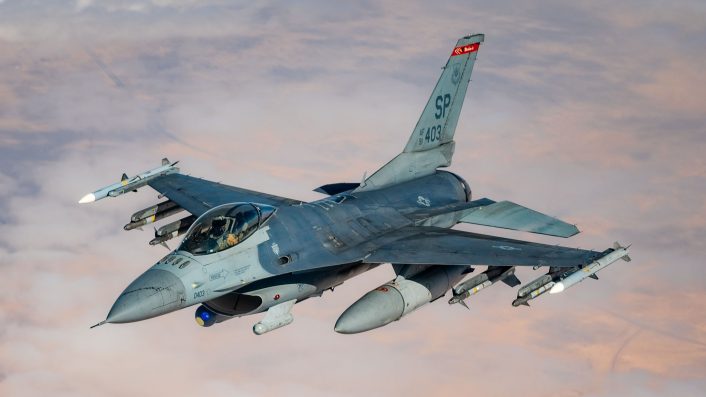
U.S. Operations in the Red Sea against the Houthis
The U.S. military has been involved since late 2023 in operations with a multi-national coalition in the Red Sea, in the Gulf of Aden and in the area of the Bab el-Mandeb strait against the Iranian-backed Houthi militia operating out of Yemen. The Houthis started attacks on civilian shipping in the area after the terrorist attack of Hamas on Israel of Oct. 7, 2023.
To support Hamas, Houthis employed both aerial and naval drones, in addition to missile attacks, against shipping routes while also launching sporadic long-range drone and ballistic missile attacks on Israel. After the UN Security Council adopted Resolution 2722 in January 2024, condemning the Houthi attacks and reaffirming the freedom of navigation, the United States launched Operation Prosperity Guardian, aimed at protecting civilian shipping and reducing the Houthi threat, with the first airstrike against Houthis dating back to Jan. 12, 2024.
Over the course of one year, the warships and aircraft involved in Operation Prosperity Guardian have engaged multiple times Houthi targets, including land strikes to remove military capabilities from the terrorist group, and engagements to shoot down drones and missiles launched from Yemen.
🇨🇵🇾🇪The first video recording of the “fights” in the Red Sea
French military released footage of an embarked helicopter of a French destroyer intercepting and downing a Houthi UAV launched from Yemen towards the Red Sea pic.twitter.com/ikax1MIsW1
— Megatron (@Megatron_ron) March 20, 2024
The Carrier Air Wing 3, aboard the aircraft carrier USS Eisenhower (CVN-69), logged 14,000 sorties, 32,000 flight hours and 15,000 arrested landings during a lengthy deployment in the Red Sea, while its F/A-18E/F Super Hornets and E/A-18G Growlers shot more than 60 air-to-air missiles. Operation Prosperity Guardian also included the first long-range operational use of B-2 stealth bombers against Yemen, with the stealth bombers flying all the way from their home base at Whiteman Air Force Base in Missouri, and the combat debut of the F-35C carrier-based stealth fighter jets.
Interestingly, the U.S. Navy recently announced that an MH-60R Seahawk helicopter, an upgraded variant of the original UH-60 Black Hawk developed for naval use, has been involved in the shoot-down of a Houthi drone, but it is unclear what weapon was involved and when this happened. Probable candidates for the achievement are however restricted to only a few weapon system, including the AGM-114 Hellfire missile, the very AGR-20 Advanced Precision Kill Weapon System (APKWS) also used by U.S. Air Force’s F-16s, or on-board machine guns.
